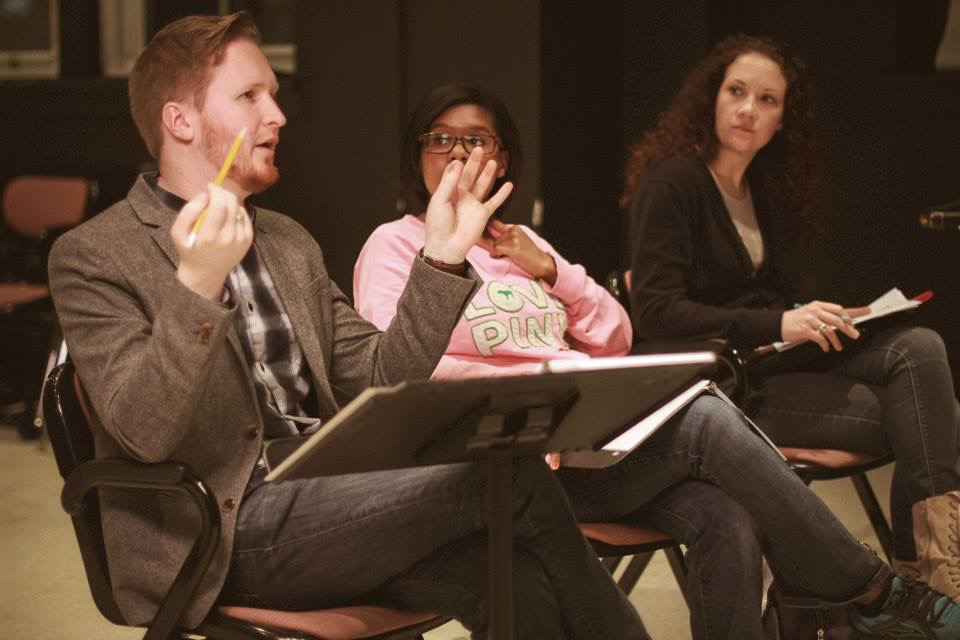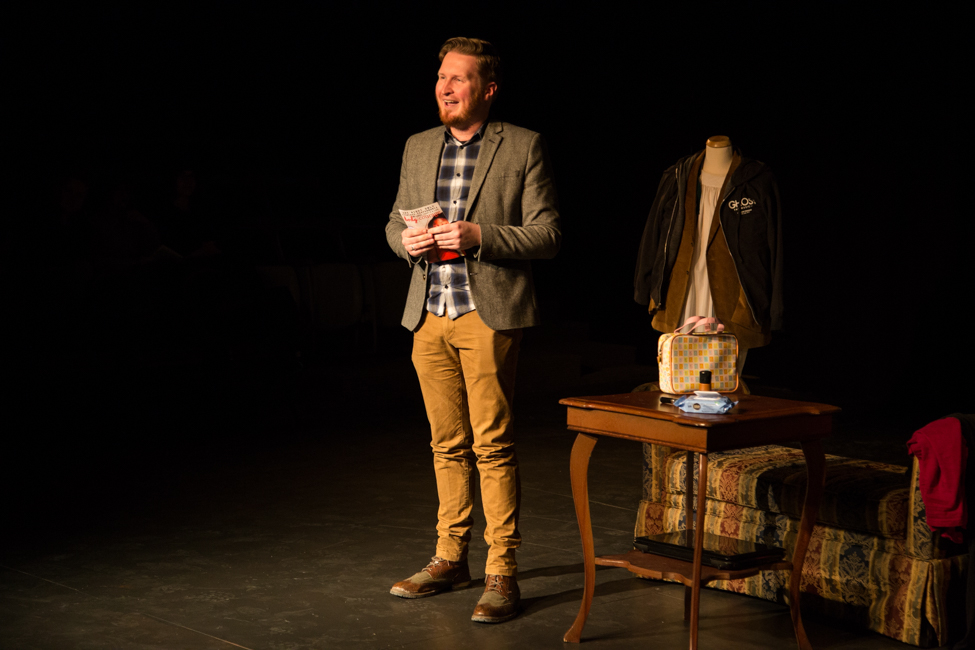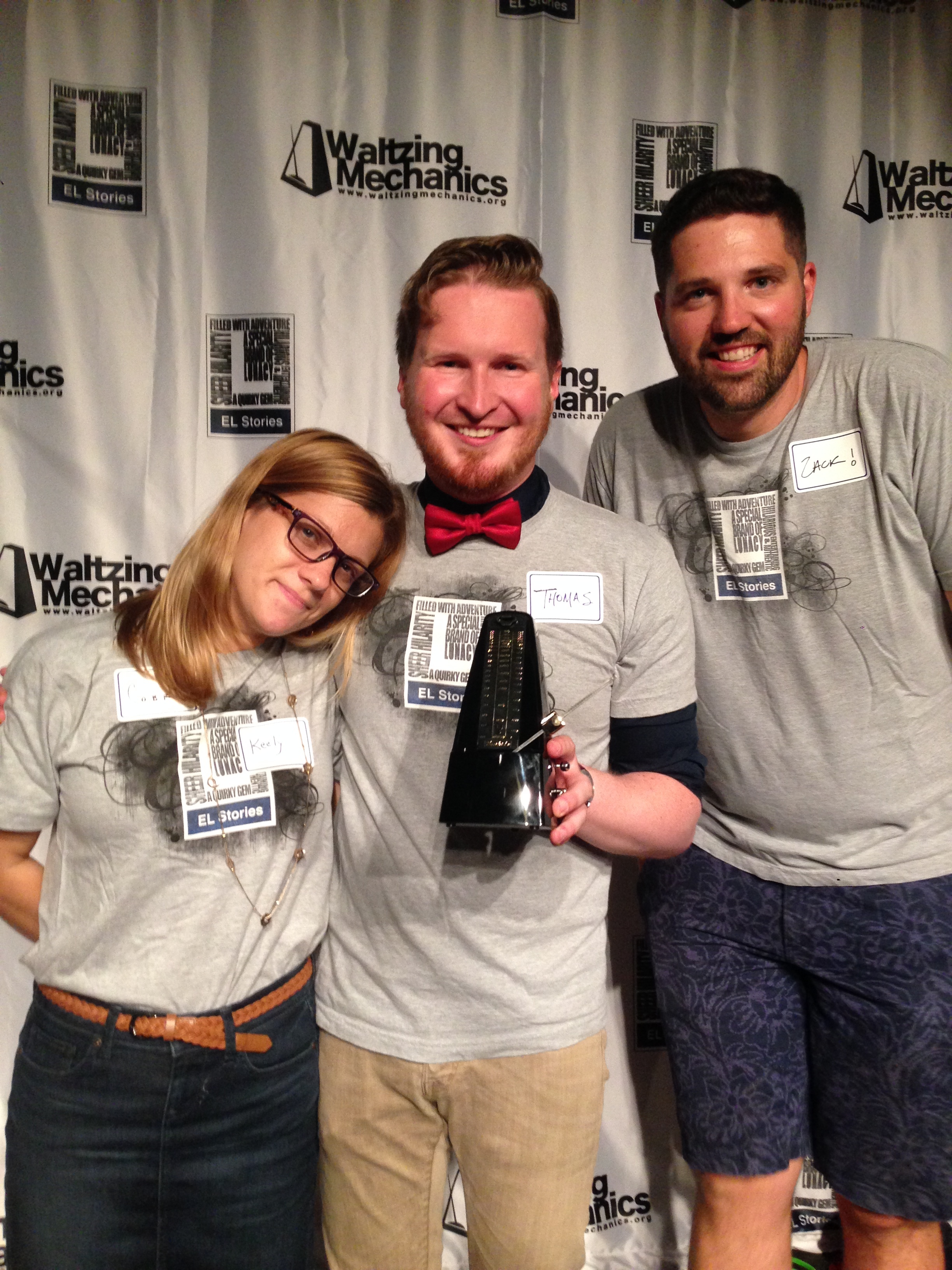In addition to
- helming a non-profit ensemble theatre company as an artistic director
- casting more than 200 actors in an array of performance projects, including EL STORIES
- leading more than 35 rehearsal processes as a director
I have also managed program environments as diverse as a non-profit community counseling center, a 77 seat Equity theatre, and a major airline’s operations tower at Chicago O’Hare International Airport. Each environment has required me to rise to different challenges, and while I believe I have learned new techniques and strategies in each position, the foundation of my management style has relied on my theatrical training.
Collaborative
A theatrical endeavor cannot run successfully unless all the players are working together. Theatre, like management, is not a product-based system where one builds an assembly line, puts rules into place, and expects consistent results. The variability of human resources requires a personal investment in each employee and from each employee. I have always endeavored to build a team that pulls together.
Improvisational
No environment I have ever managed has been one-size-fits-all. I don’t believe in the phrase, “I’ve seen it all before.” Even classic problems in the industry present new permutations with frequency. The ethic of “thinking outside the box” has been a mainstay of my managing.
deadline driven
We set performance dates, we work backwards planning a production calendar and rehearsal schedule, and then we meet our benchmarks to be ready for the audience on opening night. This maxim was crucial in American Airlines’ control tower at O’Hare. Every flight was its own production - met with resources, managing expectations, and moving with precision against a ticking clock. American ran commercials priding itself on being “the on-time machine,” but in practice, it involved the tower managing teams of flight crew, baggage personnel, passenger service agents, aircraft mechanics, and other service personnel to meet pushback of each aircraft by the scheduled departure time. This same punctuality and accountability is how I approach theatrical endeavors.
Resentments form and trust breaks down when stakeholders are left out of the loop. Whether managing a workgroup of two or twenty-five, I use both email and face-to-face communication
to keep the team abreast of our shared aims. In the rehearsal room, I strive to keep my team on the same page so we can pull together. On occasion when I’ve needed to give extra direction to an actor or a designer who isn’t fully on board, I have pulled them aside for a private conversation that was not in range of the rest of the company. At the counseling center, I would hold weekly supervision meetings with my direct reports to stay abreast of their working portfolios and check in on any trouble spots. At the airport where conditions could change quickly, I would use public address systems to keep passengers informed and electronic messaging to disseminate necessary operational changes to various department frontlines. Relatedly, I have always maintained an atmosphere where my “door is always open” for
employees or collaborators who need to bring grievances or questions to me.
Communicative
Decisive
A key value of the director in the rehearsal room is possessing and articulating a unified vision. Someone must be the steward of what is in and out of bounds for that strategy. In the control tower, I assessed matrices of inbound flight data to determine where to draw the line of which flights we held for late connecting passengers and which we let go. That job in particular required being knowledgeably prepared, anticipating requests for exceptions, and making the call in the moment when the time came. Similarly, I try to gather input from relevant stakeholders in any collaborative process, but when the time comes to articulate a decision, I feel comfortable making that call. Casting in particular is a series of crucial decisions that can make or break an artistic process. Over my tenure casting nearly 20 productions with Waltzing Mechanics, I proved that I can quickly assess both talent and personality to hire dynamic and harmonic ensembles of actors.





